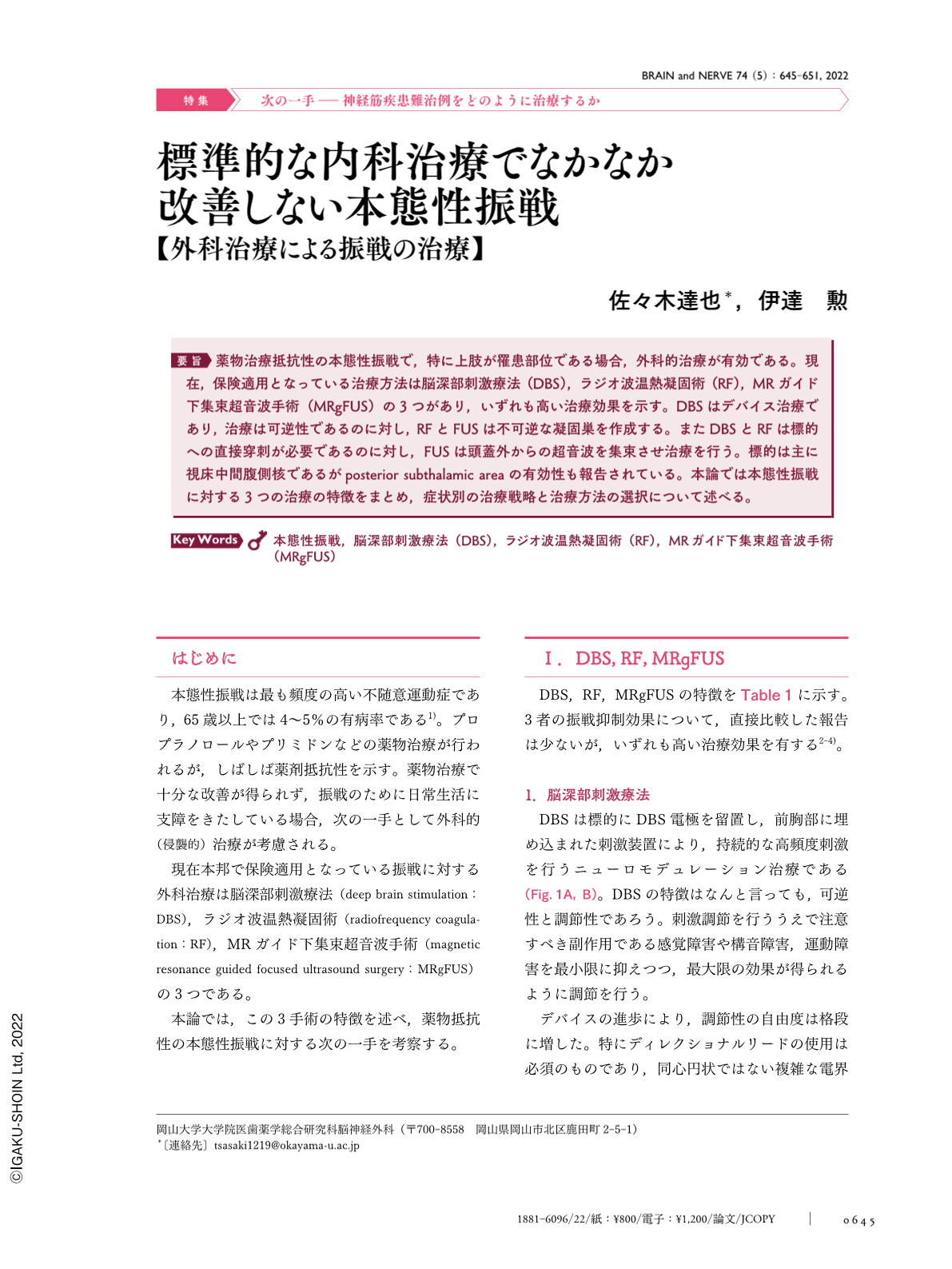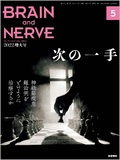Japanese
English
- 有料閲覧
- Abstract 文献概要
- 1ページ目 Look Inside
- 参考文献 Reference
薬物治療抵抗性の本態性振戦で,特に上肢が罹患部位である場合,外科的治療が有効である。現在,保険適用となっている治療方法は脳深部刺激療法(DBS),ラジオ波温熱凝固術(RF),MRガイド下集束超音波手術(MRgFUS)の3つがあり,いずれも高い治療効果を示す。DBSはデバイス治療であり,治療は可逆性であるのに対し,RFとFUSは不可逆な凝固巣を作成する。またDBSとRFは標的への直接穿刺が必要であるのに対し,FUSは頭蓋外からの超音波を集束させ治療を行う。標的は主に視床中間腹側核であるがposterior subthalamic areaの有効性も報告されている。本論では本態性振戦に対する3つの治療の特徴をまとめ,症状別の治療戦略と治療方法の選択について述べる。
Abstract
Drug-refractory essential tremors, especially those in the upper extremities, may benefit from surgical treatment. Currently, three main treatment methods are available: deep brain stimulation (DBS), radiofrequency coagulation (RF), and magnetic resonance -guided focused ultrasound surgery (MRgFUS). DBS is a device-based therapy, and its effects are reversible, whereas RF and FUS create irreversible coagulation lesions. DBS and RF require the direct puncturing of the target, whereas FUS focuses ultrasound from extracranial sources. The primary target is the ventralis intermedius of the thalamus (Vim); however, the posterior subthalamic area (PSA) is also reportedly an effective target site. In this article, we will summarize the features of the three treatments for essential tremors, and discuss the treatment strategies and methods for each symptom.

Copyright © 2022, Igaku-Shoin Ltd. All rights reserved.


